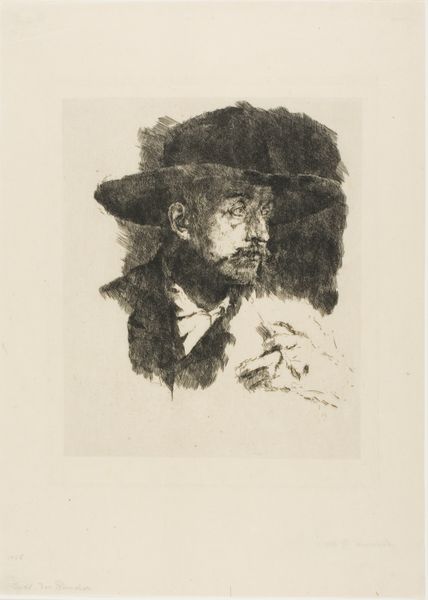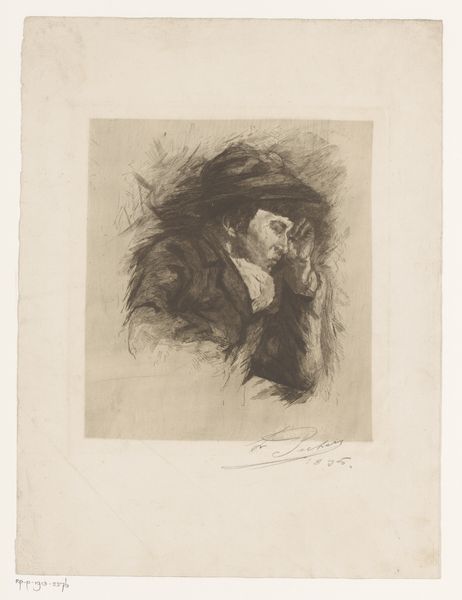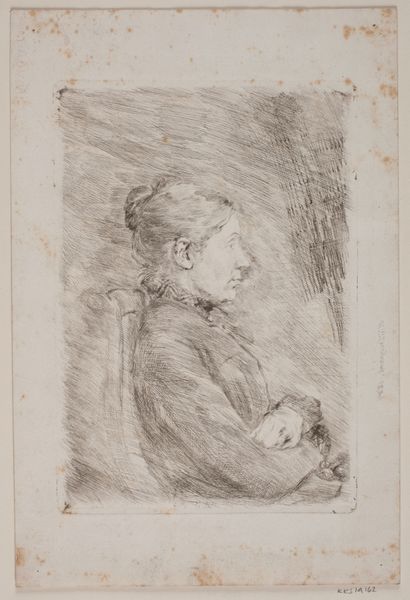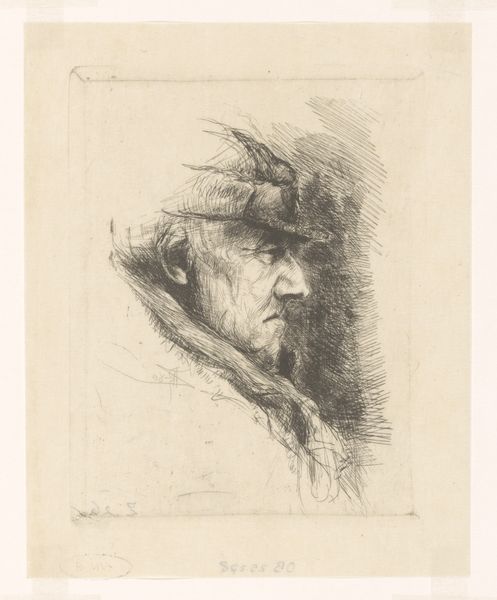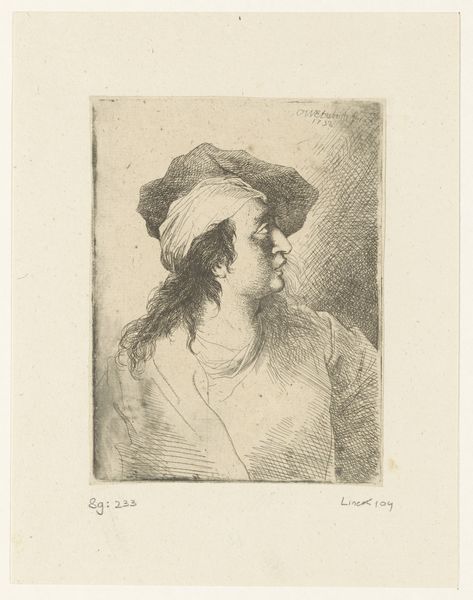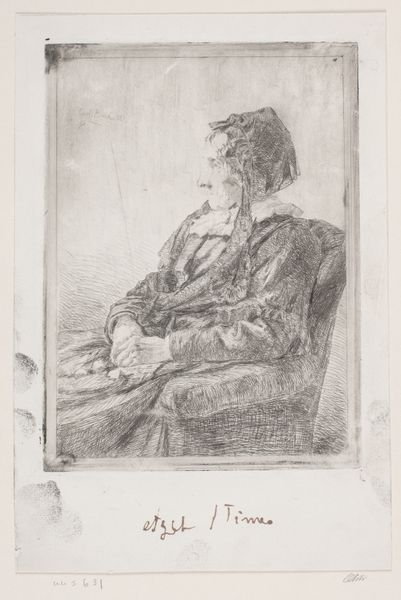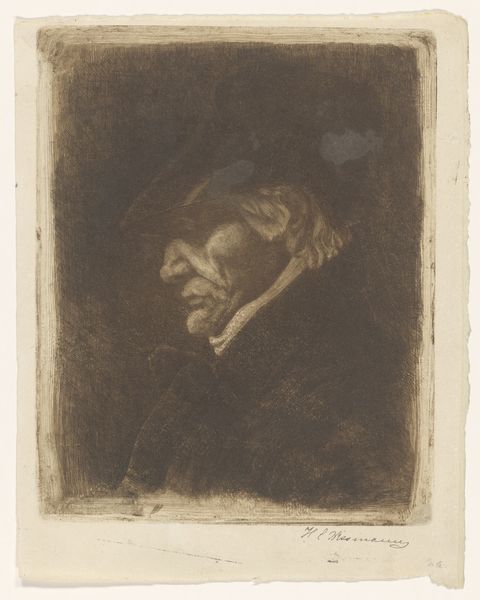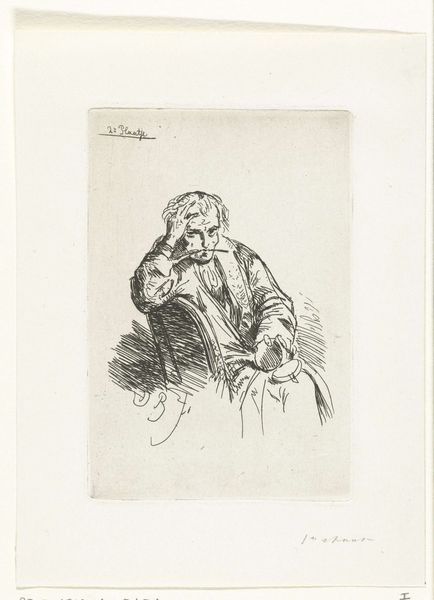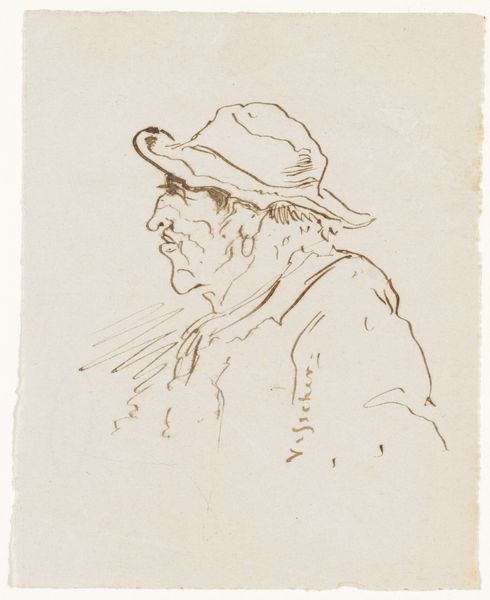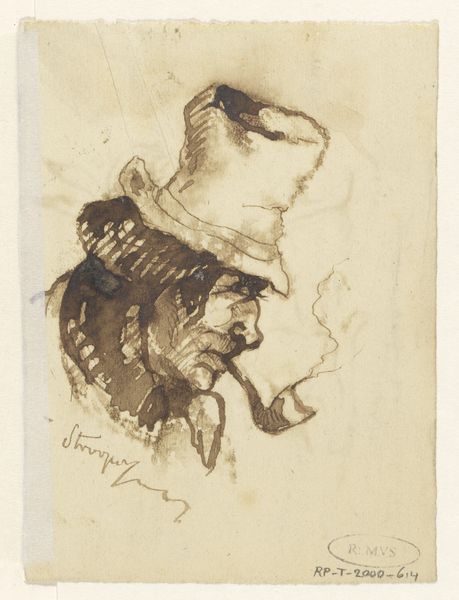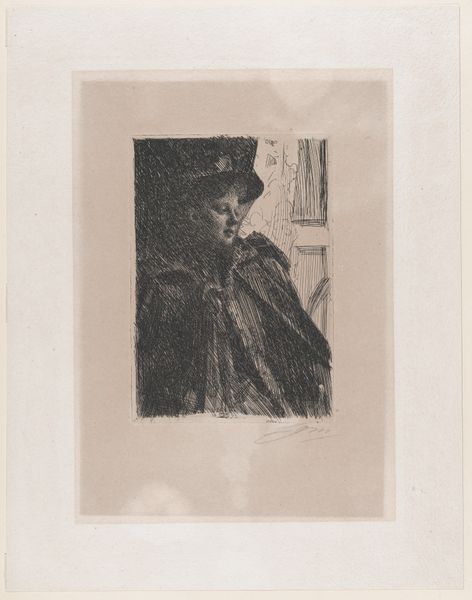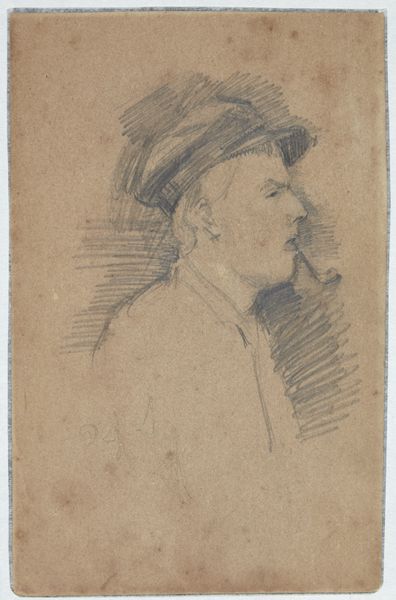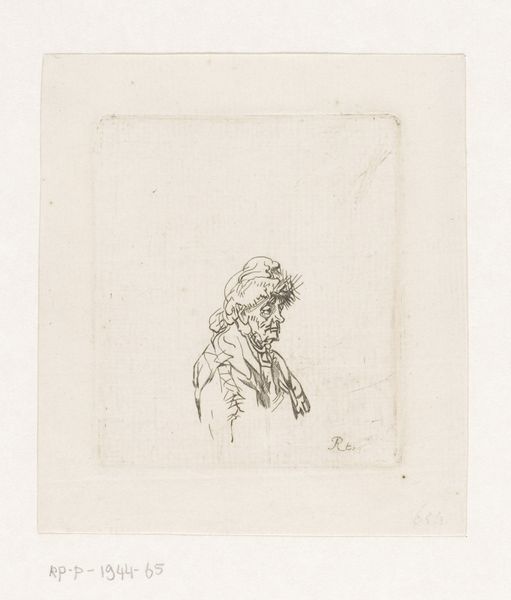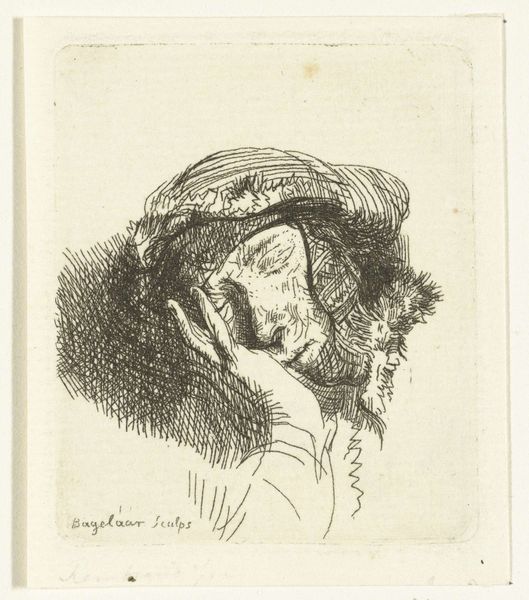
drawing, pencil
#
portrait
#
drawing
#
pencil drawing
#
pencil
#
realism
Dimensions: height 225 mm, width 206 mm
Copyright: Rijks Museum: Open Domain
Curator: We’re looking at Louis Peeters’ 1895 pencil drawing, “Man wrijft zich in het oog,” or "Man Rubbing his Eye". It’s a poignant, realist portrait rendered with striking detail. Editor: My initial impression is one of exhaustion. The scratchy lines, the way the figure's head is bowed... It speaks to a weariness that feels both personal and perhaps, reflective of broader social conditions at the time. Curator: Absolutely. Peeters created this drawing during a time of significant social upheaval and industrial change. There’s a certain griminess that pervades much of the art from this period that acts almost like a visual shorthand for economic precarity. Editor: Yes, you can almost feel the grit under his fingernails. And the hat... it casts a shadow that seems to emphasize his desire to withdraw from the world, or perhaps the world’s indifference toward him. It seems that the hat, however intended, serves as this interesting intersection of gender and class. Curator: Exactly. This resonates with broader trends within Realist art. You also see the use of sharp pencil strokes as a form of social commentary. It depicts everyday individuals and elevates the working classes to a position of visual prominence, highlighting the often invisible struggles and realities of the working class. Editor: It is tempting to read a layer of vulnerability. Perhaps it’s just allergies. What is this man’s experience with labor? With capital? It also feels connected to conversations around masculinity at the time. Were expectations being met for him as a laborer, a husband, a man? It’s subtle, yet very evocative. Curator: Considering the sociopolitical environment, with increased focus on worker’s rights, images like this would be loaded. Peeters creates an artwork for public discourse, sparking reflection on who makes up “the public." He provides an intersection for conversation and political action through art. Editor: It invites empathy, certainly. The level of detail in the face, contrasted with the almost frantic lines surrounding him... it suggests a world closing in. A potent reminder to check in with the folks in your life. Curator: I agree, seeing artwork within a contemporary space invites further conversation about working class rights. Editor: Art does that, reflecting and anticipating cultural landscapes!
Comments
No comments
Be the first to comment and join the conversation on the ultimate creative platform.
